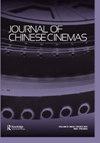Projecting the ‘Modern’: The reconstruction of urban cinemas in post-Mao China, 1987–1989
IF 0.4
3区 艺术学
0 FILM, RADIO, TELEVISION
引用次数: 0
Abstract
Abstract In the midst of China’s market reform during the 1980s, urban cinemas were at the center of the changing cultural landscape, revealing how quickly a distinct urban space could consume, digest, and recycle various consumerist attractions adapted from the West. Following the China Film Corporation’s call for a nation-wide reconstruction of urban movie theaters in 1987, moviegoing as a historically and socially defined activity became deeply rooted in, and further complicated by, urban consumers’ modern experience of public life. By 1991, nearly 2000 movie theaters across China had been renovated and commercialized, contributing significantly to the remapping of China’s urban geography. Through examining newspapers, magazines and floorplans published in the late 1980s, this article proposes a reconsideration of post-Mao urban culture in relation to this unprecedented change in the spatial refashioning of urban cinemas. I argue that the reconstructed movie theater illustrates the complex connections between state policy and mass consumption in the wake of China’s turn to marketization.投射“现代”:后毛时代中国城市电影院的重建,1987-1989
在20世纪80年代的中国市场改革中,城市电影院处于不断变化的文化景观的中心,揭示了一个独特的城市空间如何快速消费、消化和回收各种来自西方的消费主义景点。1987年,中国电影总公司(China Film Corporation)呼吁在全国范围内重建城市电影院,观影作为一种由历史和社会定义的活动,深深植根于城市消费者对公共生活的现代体验,并被这种体验进一步复杂化。到1991年,全国有近2000家电影院进行了改造和商业化,为中国城市地理的重新绘制做出了重要贡献。我认为,重建的电影院说明了在中国转向市场化之后,国家政策与大众消费之间的复杂联系。
本文章由计算机程序翻译,如有差异,请以英文原文为准。
求助全文
约1分钟内获得全文
求助全文

 求助内容:
求助内容: 应助结果提醒方式:
应助结果提醒方式:


